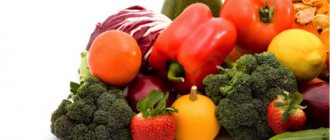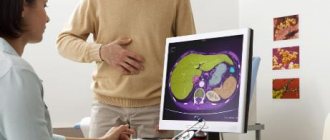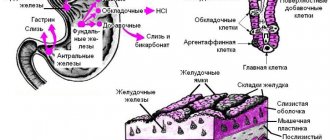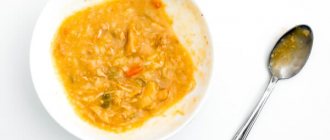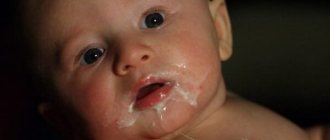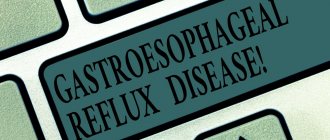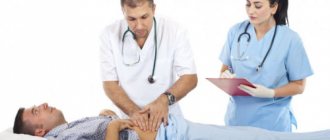Prevalence
In the International Classification, the disease is recorded under code K29.6 in the group “Other gastritis”. Since separate records of the disease are not kept, we can rely on data on postoperative complications and studies on attendance at clinics.
It has been shown that duodenogastric reflux occurs in 52.6% of cases as a consequence of operations on the duodenum, and in connection with removal of the gallbladder - in 15.5%. Symptoms similar to biliary reflux gastritis are detected in 25–40% of adults.
Types of disease
This pathology can occur for various reasons, which depend on the type of gastritis. With duodenal reflux, the cause is a malfunction of the pylorus (the sphincter that separates the stomach from the entrance to the intestines). The disease can also provoke duodenitis, characterized by the presence of inflammation in the area of the duodenum.
Biliary (bile) reflux can occur due to improper functioning of the bile ducts, as well as disruption of the sphincters. Sometimes the cause of the disease is an incipient inflammatory process of the intestinal walls.
Depending on the nature of the disease and the severity of damage to the mucous layer, reflux gastritis is divided into several types.
The superficial type of disease is the mildest. In this case, thinning of the gastric mucosa is observed, leading to disruption of its functioning. There is no deep tissue damage or dysfunction of the secretory gland.
The catarrhal type of reflex is distinguished by inflammatory processes occurring in the epithelium of the stomach, accompanied by its edema. There is also a reduction and degeneration of the mucous membrane.
In the erosive form, the mucous layer of the digestive organ becomes covered with erosions. Erosions are defects in the epithelium (the upper layer of the mucosa) that do not penetrate inside and do not affect muscle tissue.
When biliary reflux gastritis occurs, dysfunction of the endocrine glands occurs. The disease can provoke nervous disorders.
Causes and provoking factors
To understand why bile enters the stomach, which should be no higher than the duodenum, is necessary to determine the causes of the pathology. The greatest importance is attached to functional disorders of motility (peristalsis) of the stomach, its muscle tone, especially the sphincters. They manifest themselves as accelerated content release or delay. Accordingly, a distinction is made between hyper- and hypokinesia, hyper- and hypotension.
The most common is spastic contraction of the pylorus. In addition to inflammatory diseases of the stomach and duodenum, it is observed in neuroses, mental stress, in people with hysteria, and occupational intoxication. In case of decompensation, the stomach cavity expands. In differential diagnosis it is difficult to distinguish from cicatricial pyloric stenosis.
Hypotension and gastric hypokinesia accompany habitual overeating, drinking too much, and eating fatty foods. Similar disorders are observed with gastritis, enteritis, colitis, cholecystitis, and accompany many serious diseases of other organs, the nervous system (toxic paralysis), and postoperative complications.
Weakened peristalsis and gastric tone (paresis) lead to a gaping of the pylorus, through which contents can be thrown back from the duodenum
Dyskinesia is a group of disorders in the coordination of contraction of the gastric sphincters. They cause reflux of gastric contents into the esophagus, which provokes reflux esophagitis, and from the duodenum into the stomach. In the first case, gastroesophageal reflux disease of the esophagus develops. In this case, the main damaging substance is gastric acid.
Duodenogastric reflux is typical for hiatal hernia, peptic ulcer, duodenitis, pancreatitis, cholecystitis and inflammation of the biliary tract. Here the stomach suffers due to the action of irritating components of bile.
In a healthy person, contents from the underlying sections cannot reach higher levels due to the work of special stomach muscles (sphincters) located at the borders of the organ. They compress sufficiently after the passage of food and do not allow backflow.
Biliary or bile reflux gastritis is caused by the combined influence of several factors:
- impaired contractile function of the pylorus;
- decreased sphincter tone at the border of the stomach and duodenum;
- impaired motility of the digestive organs;
- chronic stagnation of duodenal secretions;
- consequences of surgical intervention on the digestive organs (gastric resection, pyloroplasty, gastroenterostomy, cholecystectomy);
- irritable bowel syndrome;
- prolapse of the stomach (gastroptosis);
- chronic hepatitis;
- peptic ulcers;
- taking non-hormonal anti-inflammatory drugs, antibiotics, painkillers, drugs containing iron and potassium, the action of the drugs causes blocking of the synthesis of prostaglandins, then mucus in the stomach;
- alcohol abuse;
- systemic disorders of nervous and endocrine regulation.
Some medical scientists disagree with the leading role of duodenogastric reflux in the development of biliary inflammation of the stomach. Their position is based on the fact that the gastric epithelium is considered quite resistant to the action of bile. They attribute the process to a physiological protective reaction that allows one to regulate acidity with alkaline contents in response to increased synthesis of hydrochloric acid.
Smoking is one of the provoking factors of pathology
The following factors can complement the listed factors: food excesses, wearing tight clothes, smoking, stressful situations. Biliary reflux occurs temporarily during pregnancy.
What it is
Biliary reflux gastritis is a special type of gastritis in which the stomach is subject to reflux of bile coming from the bile ducts. This process provokes disturbances in the functioning of the mucous layer of the stomach and inflammatory processes of various forms. The full name of this disease is reflux gastritis of the biliary type or chemical-toxic-induced gastritis of the chronic type.
Reflux refers to a process in which the contents of internal hollow organs flow in the reverse order. There are two types of reflux that can occur in the human body. With biliary bile, bile rises from the bile ducts back into the stomach. With duodenal, processed food from the intestines enters the stomach area.
During normal functioning of the gastrointestinal tract, the acidity in the stomach and intestines is different. There is an acidic environment inside the gastric organ, and an alkaline environment in the intestines. In a healthy body, the activity of the circular muscles (sphincters) of the gastrointestinal tract occurs simultaneously.
How does the surface of the stomach change?
Morphological changes often occur years later. In the section closest to the intestine—the antrum—epithelial cells grow rapidly, and the mucous goblet glands disappear.
The surface becomes swollen, and an accumulation of basophilic leukocytes saturated with nucleic acids is observed. They cause mild inflammation. A long process leads to cell degeneration and then to necrobiosis. Erosion forms and the production of protective mucus stops.
First, a focal process develops. It is possible that areas of mixed inflammation may coexist, alternating with normal mucosa. Subsequently, areas of atrophy grow. If left untreated, the epithelium may transform into malignant with the development of a tumor.
Kinds
Based on the nature of the lesion and the localization of inflammation in the stomach, the following forms of biliary reflux gastritis are distinguished:
- superficial - epithelial dystrophy is typical;
- catarrhal - swelling and inflammation of the inner membrane are associated;
- erosive - deep layers are affected, necrobiosis of cells forms erosions, and symptoms such as bleeding appear;
- antral - indicates the development of gastritis in the lower part of the organ (pyloric canal, antrum, pyloric sphincter), this zone is the first to be affected and suffers the most.
Since there is no single classification, some authors highlight:
- acute biliary reflux gastritis;
- fibrinous with the release of fibrinous-purulent exudate;
- necrotic;
- purulent.
Complications
The prolonged course of gastritis against the background of biliary reflux can lead to periodic reflux of stomach contents into the esophagus with the development of esophagitis. When gastric juice enters the vocal cords or trachea, a reflex laryngospasm occurs, which, in the absence of emergency measures, causes asphyxia. The progression of reflux gastritis contributes to the development of gastric ulcer, which can be complicated by gastrointestinal bleeding, perforation of the organ wall, and peritonitis. Ulcerations resulting from biliary reflux tend to become malignant.
Symptoms
The disease develops gradually and has a chronic course. The most common symptoms:
Signs of atrophic gastritis of the stomach
- pain in the epigastric region on an empty stomach, of varying nature and intensity (acute or constant aching);
- feeling of heaviness in the upper abdomen;
- bloating (flatulence);
- belching of eaten food and air;
- heartburn;
- nausea;
- periodic vomiting of bile;
- unstable stool (alternating diarrhea and constipation);
- decreased appetite;
- weight loss
Diagnostics
The doctor becomes suspicious of the disease after careful questioning and clarification of the patient’s complaints, when the cause is identified. Special attitude towards persons who have undergone surgery. They are additionally examined by a surgeon. Indirect confirmation of digestive disorders is possible through blood and stool tests (scatology + occult blood).
The basis of diagnostics is hardware research. Fibrogastroduodenoscopy reveals foci of inflammation in the antrum, swelling of the epithelium, and widening of the sphincter opening between the duodenum and the pyloric part of the stomach.
Modern interpretation of gastritis requires assessment of the condition of the mucosa using a biopsy taken during fibrogastroduodenoscopy. In this way, the form of the disease is confirmed and the presence of epithelial metaplasia during the transition to cancer is checked.
To study the motility and contractility of the gastroduodenal zone, antroduodenal manometry or gastrography is used.
If necessary, daily pH measurements are carried out using the Gastroscan apparatus.
Acidity measurements using pH measurements and the use of a histamine test make it possible to study the influence of the level of acid formation in the stomach. X-ray of the stomach and intestines using a barium suspension helps to trace the movement of stomach contents, record violations of the contraction of the pyloric sphincter and reflux in the images. To check the participation of other organs of the digestive tract in the pathogenesis, an ultrasound of the abdominal cavity is performed.
When medications don't help
In some cases, conservative therapy does not bring results, despite the fact that the patient regularly follows the doctor’s prescriptions. And in case of a particularly severe course of the disease that does not respond to standard treatment methods, the doctor may recommend treating reflux surgically.
But you shouldn't be afraid of surgery. Firstly, it is indicated only in advanced cases, including the occurrence of a hiatal hernia. Secondly, the surgical treatment method is always preceded by a comprehensive examination of the patient.
The doctor must make sure that despite taking medications and diet therapy, it is not possible to control the level of bile reflux. Only then, after consultation with a surgeon, nutritionist and therapist, is a final decision made on the advisability of the operation.
Thus, bile reflux is a syndrome that most often occurs against the background of diseases of the upper digestive tract. Its symptoms can be cured by resorting to methods of modern drug therapy, however, one should not forget that the reasons that cause bile reflux also need to be corrected.
Treatment of biliary reflux gastritis
Therapy of the disease requires the patient to quit smoking, drinking alcohol, fatty, spicy and fried foods. Much more attention will have to be paid to proper nutrition and adherence to the regime. Intense exercise on the abdominals is not recommended. Muscle tension increases intraperitoneal pressure and promotes reflux movements.
To relieve the negative effects of acidity, drugs and folk remedies with an enveloping effect are used: Maalox, Almagel, decoction of flax seeds, oatmeal jelly. Almagel A also contains Anestezin, so it provides good pain relief to the inflammatory zone. For high acidity, drugs that block the secretion of gastric juice (Omeprazole, Rabeprazole) and histamine receptor blockers are indicated.
Hydrotalcite - contains combined minerals (magnesium, aluminum) that suppress acid secretion
A group of prokinetics is prescribed to improve the tone of the pyloric sphincter and the muscular layer of the stomach (Primer, Motilium, Motilak). Domperidone and Metoclopramide prevent reflux into the stomach. In order to bind bile acids and improve the outflow of bile, ursodeoxycholic acid preparations (Ursofalk, Ursosan, Ursachol, Holacid) are used.
In case of a long course of the disease, vitamins A, E, group B are certainly prescribed. If the examination excludes suspicion of an erosive form and oncology, then courses of physiotherapy are effectively used:
- amplipulse therapy is a method of restoring gastric motility and normalizing secretory function;
- exposure to decimeter waves and ultra-high frequency - relieves swelling of the mucous membrane, pain, stimulates healing.
Indications for acupuncture are considered individually.
Folk remedies
Traditional medicine recipes are popular among patients with moderate biliary reflux gastritis. The decoctions must be taken over a long period of time. Recommended:
- combined use of chamomile, St. John's wort and yarrow;
- dandelion and mint flower syrup.
Typically, chamomile, plantain, calendula, and dandelion are used for low acidity, but their anti-inflammatory properties are needed to treat gastritis. Therefore, use in combination and mixtures is permitted.
Surgical treatment
Surgical intervention for biliary gastritis is rarely used. Usually they operate on emergency indications (bleeding), or routinely when non-healing ulcers, erosions, and tumor formations are detected.
To prevent reflux gastritis, it is necessary to exclude factors that provoke the disease. Monitoring your health after surgery allows you to start preventive treatment earlier and identify complications. Therefore, patients should be examined at least once a year.

